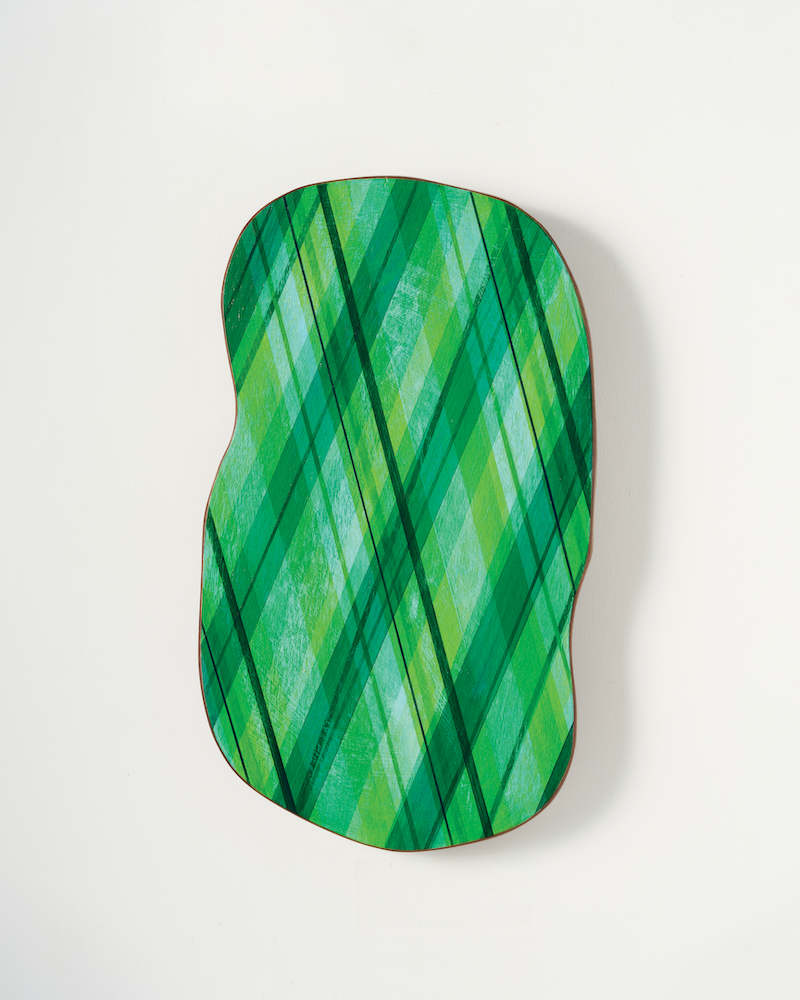“Patterns, in their simplest form, are the repetition of a single element,” says Sydney-based artist Jan Handel. “Each part adds to the previous to make a greater and more complex whole.”
For Handel, the grid is the essential element that shapes her practice, providing structure not only for her compositions but also acting as a signifier. A grid can refer to landscapes, architecture, advertising, shelving – it delineates behaviour and represents the constraints and boundaries of human existence.
The grid provides firmly set rules, both in life and in art. Each line determines the placement of the next, limiting the possibilities until the final form of the work is realised. This is not to say that Handel’s works are restricted to two dimensions, limited by an x- and y-axis. Indeed, it’s quite the opposite.
Handel likes to paint on irregularly shaped panels, which contrast with the linear subjects of her works. She also plays with depth perception, using alternating line widths, colour, and paint translucency, giving her works a spatial element. Her works are a dialogue between colour and form, regulated by the conceptual constant of the grid. Though bound by a rigid framework, Handel utilises her aesthetic methodology to test the limits of pattern, and in doing so has found endless new visual relationships for her audience to explore.
Above: Jan Handel, Prelude III (Deep Forest), 2022. Acrylic and varnish on marine ply, 40 x 23cm. Photos: Case Images. Courtesy: the artist.

Jan Handel, Nature/Un-Nature (Urbanisation), 2022. Acrylic and varnish on 18mm marine ply, 120 x 120cm.

Jan Handel, Prelude II (Illusion), 2022. Acrylic and varnish on marine ply, 25 x 21cm.

